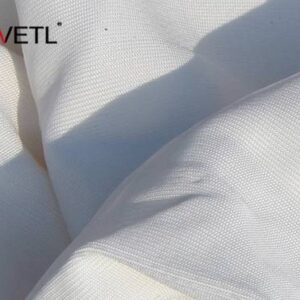In high-stakes environments like climbing, rescue, and industrial safety, the choice of rope is more than just a matter of convenience—it’s a matter of life and death. With advanced materials like Kevlar rope entering the market, many professionals are asking: Can aramid-based ropes truly replace traditional climbing or rescue lines? Let’s take a deeper look into the strengths, limitations, and real-world applications of aramid Kevlar rope, especially in the context of vertical load-bearing and extreme conditions.
Kevlar rope is made from aramid fibers—specifically Kevlar®, a registered trademark of DuPont. It is known for its exceptional tensile strength, flame resistance, and low stretch under load. As a synthetic polymer, Kevlar is five times stronger than steel by weight, which is why it’s widely used in military, aerospace, and high-performance equipment. Sovetl, a leading rope manufacturer, offers premium-grade aramid Kevlar ropes and polyester aramid rope hybrids that are tailored for demanding use cases, including tactical applications and emergency rescue.
🧗 Is Kevlar Rope Suitable for Climbing?
✅ Pros
-
High Strength-to-Weight Ratio
Kevlar ropes offer incredible tensile strength—typically exceeding 3000 MPa—making them highly reliable for static loads or rappelling systems. -
Low Stretch (Static Rope Behavior)
Kevlar has minimal elongation under tension (often <1.5%), which is ideal for scenarios where controlled descent or steady anchoring is needed, such as in rescue operations or hauling systems. -
Heat Resistance
Kevlar maintains structural integrity at temperatures up to 400°C (752°F). This makes Kevlar ropes especially valuable in rescue operations involving fire, friction, or high-temperature industrial environments. -
Cut & Abrasion Resistance
Compared to nylon or polyester, aramid Kevlar rope resists sharp edges and abrasive surfaces far more effectively—an essential trait when operating in rocky terrains or metal structures.
⚠️ Considerations & Limitations
While Kevlar rope has many advantages, there are important factors to consider when evaluating it for climbing:
-
Not for Dynamic Loads:
Kevlar’s low stretch makes it unsuitable for lead climbing where dynamic load absorption is crucial. In the event of a fall, the shock load could be dangerously high due to lack of rope elongation. -
UV Sensitivity:
Prolonged UV exposure can degrade aramid fibers over time. Though Sovetl offers polyester aramid rope blends with UV-resistant sheathing, proper storage and inspection are necessary. -
Brittleness Under Bending:
Kevlar fibers can suffer from fatigue if constantly bent at sharp angles, reducing long-term flexibility. -
Cost:
Compared to conventional nylon ropes, it is significantly more expensive, which can be a concern for non-specialized users.
🚨 Rescue Applications: A Perfect Fit
Where Kevlar rope truly shines is in rescue and tactical operations:
-
Vertical rescue: When stretch must be minimized to avoid unwanted movement.
-
Firefighter gear: For hauling, lowering equipment, or escape ropes.
-
Military extractions: Rappelling in combat zones or anchor systems under fire and heat.
With the added layer of polyester aramid rope construction, Sovetl provides ropes that offer abrasion resistance from polyester, coupled with the thermal and tensile performance of Kevlar. This hybrid design extends the usability in both vertical and high-friction scenarios.
🧩 Kevlar Rope vs Traditional Rope Comparison
| Property | Nylon Rope | Polyester Rope | Kevlar Rope (Sovetl) |
|---|---|---|---|
| Tensile Strength | Medium | Medium | ⭐ Very High |
| Stretch / Shock Absorption | High | Low to Medium | ❗ Very Low |
| Heat Resistance | Low | Medium | ⭐ Extremely High |
| UV Resistance | Medium | High | Moderate (Improved in blends) |
| Cut/Abrasion Resistance | Medium | Medium | ⭐ Excellent |
| Cost | Low | Medium | 💰 High |
🧠 Final Verdict: Should You Use Kevlar Rope for Climbing?
-
For recreational or sport climbing: ❌ No. Kevlar’s low elasticity makes it dangerous for dynamic falls.
-
For industrial climbing or rescue anchoring: ✅ Yes. Excellent for load-bearing anchors, rappelling, and heat-exposed environments.
-
For military, fire rescue, or tactical operations: ✅ Absolutely. A robust, heat-resistant, and lightweight solution.
While Kevlar rope is not a universal replacement for all climbing needs, it is an indispensable tool for rescue operations, high-heat environments, and mission-critical anchor systems. With trusted manufacturers like Sovetl, users gain access to industry-grade aramid Kevlar rope and advanced polyester aramid rope hybrids designed for safety, strength, and performance. When every second matters, and failure is not an option—Kevlar might be exactly what your operation needs.




